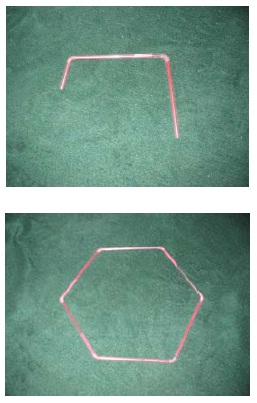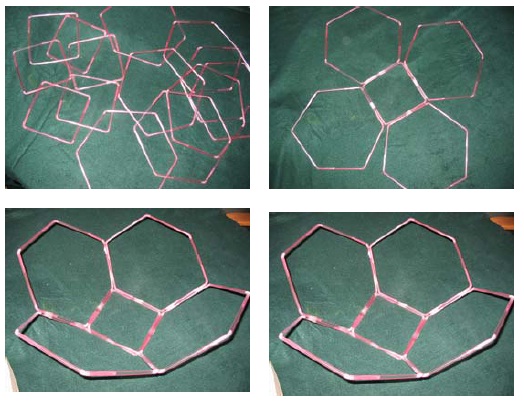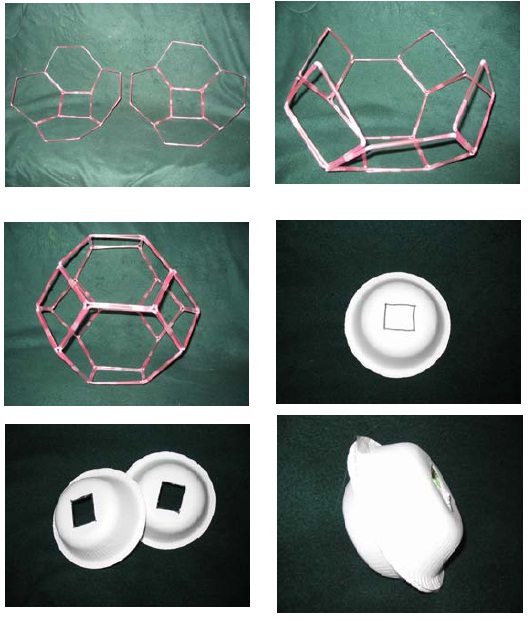





Published on Apr 02, 2024
Zeolites are rocks that are porous, meaning they have tiny holes inside of them. The framework, or structure, of zeolites is made up of aluminum, silicon, and oxygen atoms. These atoms form tiny holes (often referred to as cages). The tiny holes can trap molecules (which are also very small). Because we cannot see the cages of a zeolite, in this activity, you will be making models of a zeolite. Scientists often use models to help them understand things that are too big or too small to see. They also use models to simplify complicated problems. One of the interesting aspects about zeolites is their structure. Many zeolite structures are based off of what is referred to as a sodalite cage. These cages are then stacked together to form the structure (at the molecular level) of zeolites. Another interesting aspect of zeolites is their ability to trap molecules inside the cages. You will be building two models in this activity: one that shows the structure of the sodalite cage found in some zeolites and the other is a model of how ions or molecules can get trapped in zeolites.
• Learn about why scientists use models. You will build your own models of zeolites; one showing the structure, and the other modeling the property of size selection. You can then build extra models.
• Flexi-straws (ones that bend) – at least 72 straws are needed
• Scotch or masking tape
• Different colored construction paper, scissors, and a marker (optional)
• Two paper bowls
• Pointy scissors
• Masking tape
• Marker or pen
• Blocks that are three different sizes (such as a Lego brick, traditional alphabet block, and a large brick or box)
Talk to children about models. Where do we see models? Do you have any toys that might be considered models? Toy cars are an example of a model—they are smaller than a real car and simplified, but by looking at a toy car, one can get the general shape and how the car moves. Can you think of any more examples of models?
Part 1: Building a Sodalite Cage Many zeolites are built of a sodalite structure. The sodalite cage is formed by silicon or aluminum atoms on the corners of the cage and oxygen atoms along the “bars” of the cage. By using flexi-straws, you will be able to make a model of the sodalite cage. Start by taking two straws. Bend the one corner, and stick the smaller side of the straw into the larger side of the bigger straw. This often requires folding the smaller side. Now you have two straws connected together with a joint in the middle. Bend the second straw’s joint, and place the small end of that straw into another straw. This can be completed three more times; then, the end of the final straw can be stuck into the first straw, making a hexagon. See the pictures below:

To make a sodalite cage, you will need eight straw hexagons and six straw squares (made similarly to a hexagon, but with four sides instead of six). The tricky part is putting all of the parts together!
Start by lying a square down on the table. Attach four hexagons to each of its sides using tape. Next, attach the sides of the hexagons to each other.

Repeat the above two steps with another square and another four hexagons.
Now you have two halves of the sodalite cage! You can pick up the two halves and touch the hexagon sides to each other. There are four square shaped holes remaining. This is the tricky part. Using the remaining four squares, put them so that one goes in each point on a half of your model.
You may need an extra set of hands to help! Now, tape the two halves together! Congratulations! You have completed your zeolite model! In this model, the silicon and aluminum atoms would be where the bendy parts of the straw are.
The oxygen atoms go on in the middle of the long part of the straws. If you want, you can cut out different colored circles from paper and place them where the atoms go.
Start the activity by taking one of your bows and putting it face down on a table. Trace around your medium sized (alphabet-sized) block on the bottom of the bowl. Cut out the block shape from the bottom of the bowl. You want the block to be able to fit through the hole, so it is better to cut the hole a little bigger than smaller. Do the same thing to the other bowl. (It is okay if the holes are difficult to cut – you can ask someone for help, or just cut up the side of a bowl and then tape it back together.) Next tape the two bowls together so that their rims are touching.

This is the model of the zeolite. Even though it does not look exactly like a zeolite, it has similar properties of one. The three blocks are models of molecules. Try fitting the largest block into the hole. Does it go in? Do you think a zeolite would be able to trap molecule larger than its pores (holes)? Next try putting the smallest block into hole. Does it fit?
Try shaking your model with the small block inside of it. What happens? Do you think a zeolite will be able to trap a very tiny molecule that is much smaller than its pores? Lastly, try putting the medium sized block in the model. Does it fit? What happens when you shake this block? Can you make your block come out of the model? Is this easier or harder to do than making the little block come out? Do you think a zeolite would be able to trap a molecule that is close in size to its pore size?
The sodalite cage is only part of the structure of sodium zeolite A (which is used in the Soap versus Detergent activity). You can make the whole unit cell by adding seven more sodalite cages and connecting them in a box shape with eight cubes. This is definitely a tough undertaking!
Sodalite cages are not the only building block of zeolites. Check out: http://www.zeolites.ethz.ch/Zeolites/StdAtlas.htm (The International Zeolite Association’s Database of Structures) for many more different types of zeolites (LTA and FAU both use sodalite cages). You can also design your own—there are more zeolites to be discovered!
Most molecules are not rigid blocks but are often mobile. Use different sized and flexibility substance to make molecules (try gummy worms as a model for a long, skinny molecule – once it is in the zeolite, can you get it out?) Make another model that will not accept your medium block but will accept another sized block or shape. Zeolites come in different shapes and sizes and absorb different types of molecules. Molecules are not always rigid (meaning hard). Try making a model using a flexible molecule. Gummy worms are excellent flexible molecules. Zeolites also have a maximum number of molecules that they can hold. If you have extra blocks, how many blocks can you put into the model before you cannot put any more inside? This is similar to how actual zeolites work; after a certain point, no more molecules can fit inside the zeolite unless the zeolite breaks or molecules in the zeolite leave to make room for new molecules.
Models are a good way for scientists to look at unobservable phenomena—the things that cannot be seen because they are too small, too large, or too complicated. The first model showed the structure of the sodalite cage. This allows you to see what the structure would look like if you were very tiny. The second model showed the property that zeolites have about trapping the right size molecule. (Note, other factors, such as charge do play an effect, but this model was only showing how size can affect the model.) Both show properties of zeolites.
1. Milgrom, Harry. Paper Science. Walker Publishing Company, New York, 1978.